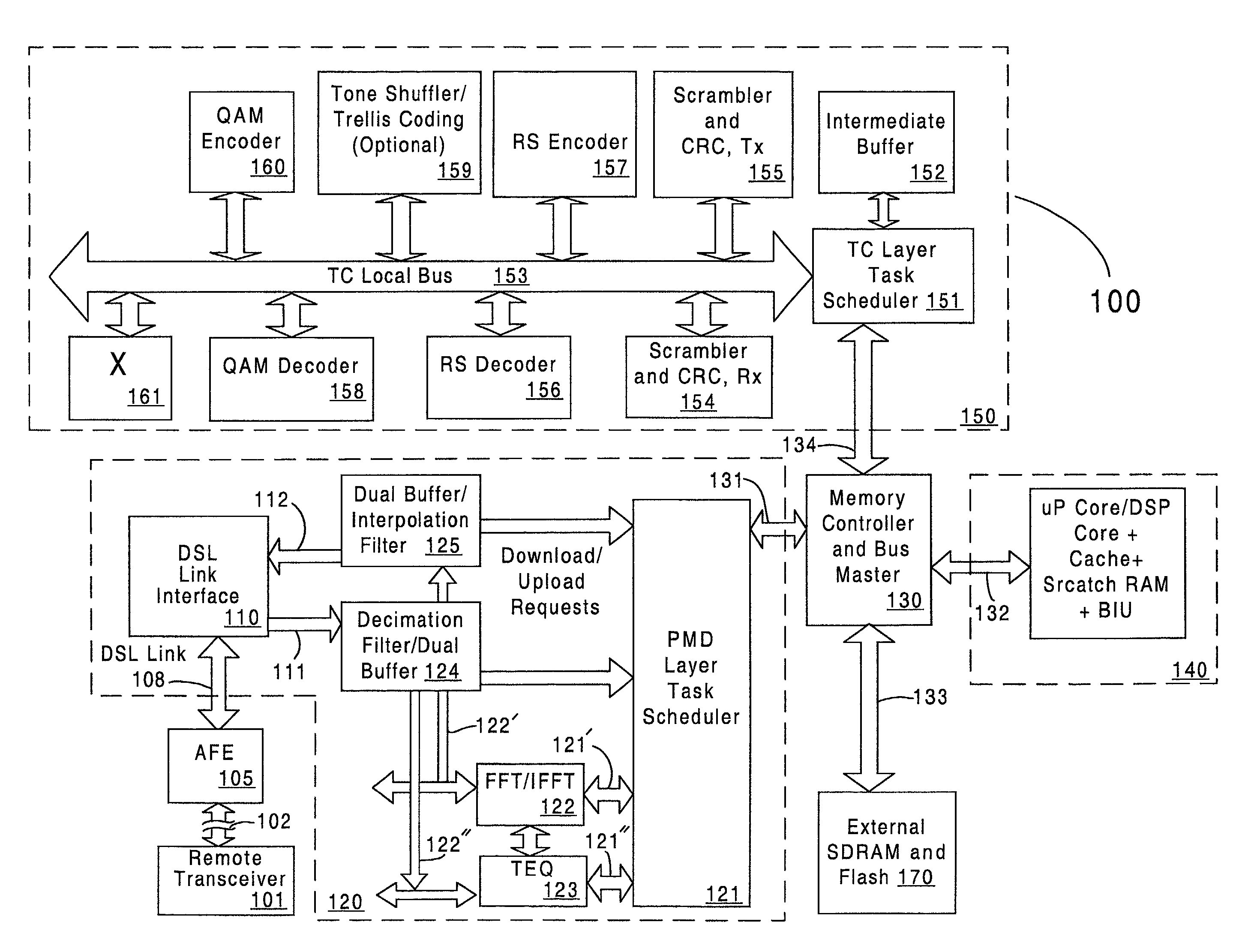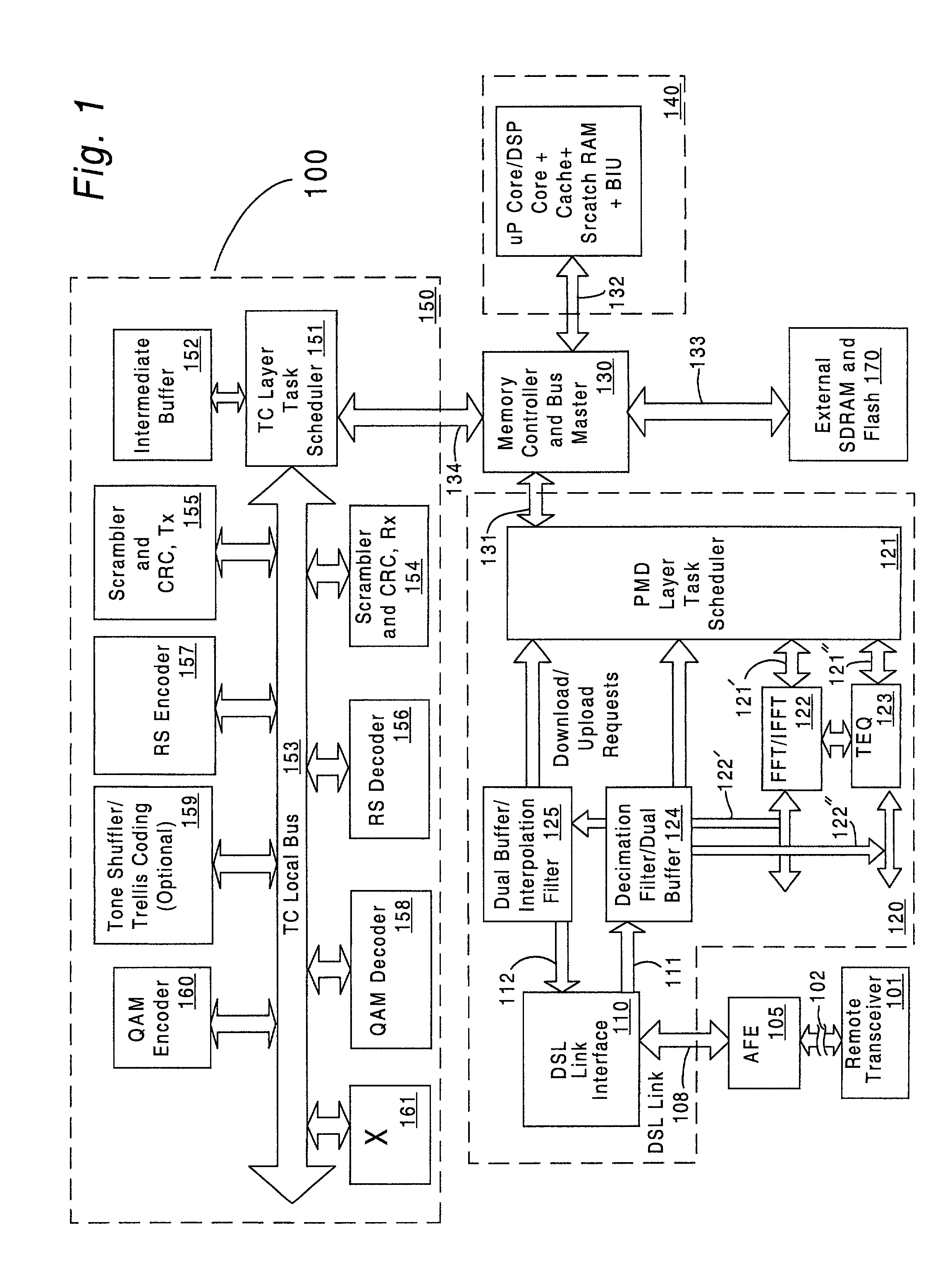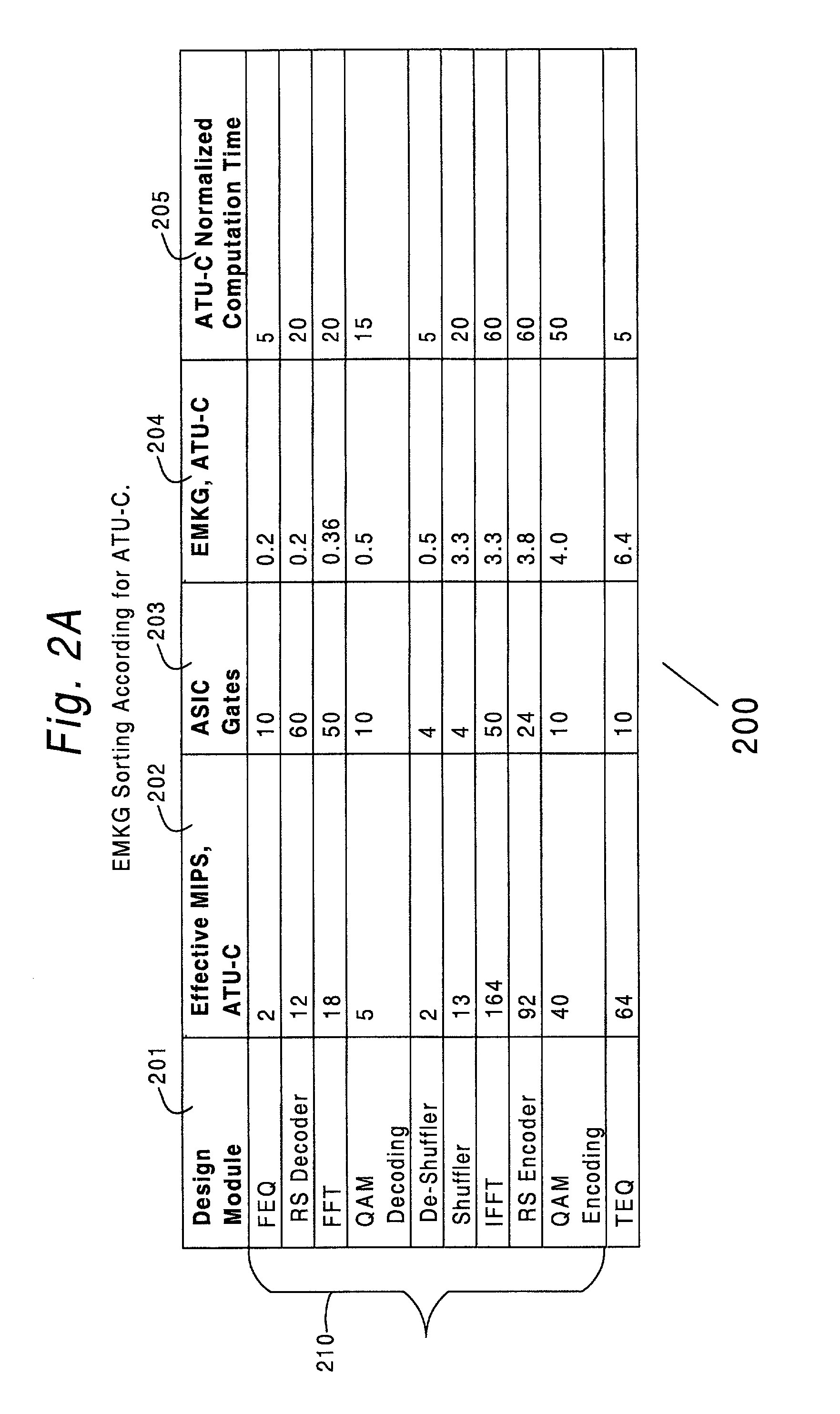Physical medium dependent sub-system with shared resources for multiport xDSL system
a technology of multi-port xdsl and sub-system, which is applied in the direction of data switching networks, instruments, generating/distributing signals, etc., can solve the problems of large gate count, difficult and costly feature upgrade paths, and functional units that are not capable of interrelation or even simultaneously operation, so as to minimize the overall processing power requirements and minimize power dissipation
- Summary
- Abstract
- Description
- Claims
- Application Information
AI Technical Summary
Benefits of technology
Problems solved by technology
Method used
Image
Examples
Embodiment Construction
[0165] A block diagram of the hardware elements used in a preferred multi-port embodiment of the present system is shown in FIG. 1. It will be understood by those skilled in the art that some non-material aspects of the system shown in FIG. 1 have been simplified and / or omitted in order to better explain the scope of the present invention. Furthermore, while aspects of the present invention are explained by reference to such preferred embodiment and other specific architectural implementation details, the scope of the present invention is by no means limited to any embodiments and details discussed herein, and many other variations, additions, modifications, etc. will be apparent to those skilled in the art from the present disclosure.
[0166] A scalable architecture system 100 as described herein includes three major subsystems: (1) PMD 120 (2) TC 150 and (3) microprocessor / DSP 140. The first two subsystems consist of ASIC modules to perform part of the ADSL / ATM PMD and TC functions....
PUM
 Login to View More
Login to View More Abstract
Description
Claims
Application Information
 Login to View More
Login to View More - R&D
- Intellectual Property
- Life Sciences
- Materials
- Tech Scout
- Unparalleled Data Quality
- Higher Quality Content
- 60% Fewer Hallucinations
Browse by: Latest US Patents, China's latest patents, Technical Efficacy Thesaurus, Application Domain, Technology Topic, Popular Technical Reports.
© 2025 PatSnap. All rights reserved.Legal|Privacy policy|Modern Slavery Act Transparency Statement|Sitemap|About US| Contact US: help@patsnap.com



